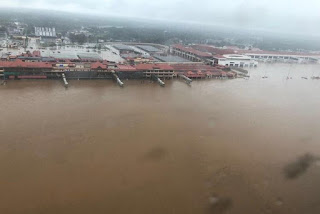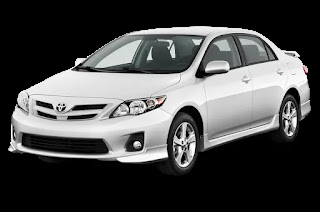Bangalore, the garden city of India is the pensioner's paradise of yesteryears.
Bangalore, though has some practical difficulties of traffic, commutation, timing, it is a great place to be in for many reasons. The climate, the people from across the country, the sincerity and hardworking nature of the people and the openness in society to experiment and study from others.
Having moved to this place in '07 from Kerala, yours fathfully wanted to be near to the technology hub and in the technology capital of the country, to experience new trends in technology first hand !! But, no more !!
I was really taken aback, to read about the country's top technology in retail application, the fully autonomous store in the world, which had opened in Kochi in July 2018. It was not opened in Bangalore, Mumbai or Delhi, it was opened in the south of India, in the state of Kerala, in the port city of Kochi.
Step aside IIT, IIM, IISc, Harvard and MIT guys, you are good only at theory .. Here comes the brilliant practical Kochi guys blending perfectly Artificial Intelligence, Deep learning and sensor technology into a retail application.
What makes Kochi so unique to implement a very forward looking technology ?? Is it a better level of public awareness of technology and development, a better level of intelligence, a constant desire to live better and more comfortably, warm and better acceptance of achievements, a constant challenge to out-perform and do better than others .. ??
 |
| Watasale store in Kochi, Kerala, India. World's third, pic courtesy Better Indian. |
Having moved to this place in '07 from Kerala, yours fathfully wanted to be near to the technology hub and in the technology capital of the country, to experience new trends in technology first hand !! But, no more !!
I was really taken aback, to read about the country's top technology in retail application, the fully autonomous store in the world, which had opened in Kochi in July 2018. It was not opened in Bangalore, Mumbai or Delhi, it was opened in the south of India, in the state of Kerala, in the port city of Kochi.
 |
| Watasale brilliant guys, ready to take on the world !! source twitter .. |
What makes Kochi so unique to implement a very forward looking technology ?? Is it a better level of public awareness of technology and development, a better level of intelligence, a constant desire to live better and more comfortably, warm and better acceptance of achievements, a constant challenge to out-perform and do better than others .. ??
The Amazon Go autonomous store concept store in US has been only partially successful. Here in Kochi, the concept is being brought in a different flavour, made fully operational and implementable as a 24-hour store with their own AI- Deep learning-RFID sensor based hardware/software combo linked to the customer QR code and credit card.
Click here for the video of Watasale ..
Click here for the video of Watasale ..
Its a great challenge, Already running successfully for the past one month in Kochi, they have to show the world that Autonomous stores can be implemented and can be successful across the world ..
Click here for the Hindu newsreport ..
Wishing these ambitious, smart, techie Kochi youngsters all good wishes when they take on the likes of Amazon and Walmart !! It is very much possible and within their reach ..
Good Luck and Good Wishes to Watasale team !! Keep Shopping, Keep walking ..
Click here for the Hindu newsreport ..
Wishing these ambitious, smart, techie Kochi youngsters all good wishes when they take on the likes of Amazon and Walmart !! It is very much possible and within their reach ..
Good Luck and Good Wishes to Watasale team !! Keep Shopping, Keep walking ..
Mail me for a case study on WATASALE that I prepared after my visit and interacting with the key partners ..
George..















